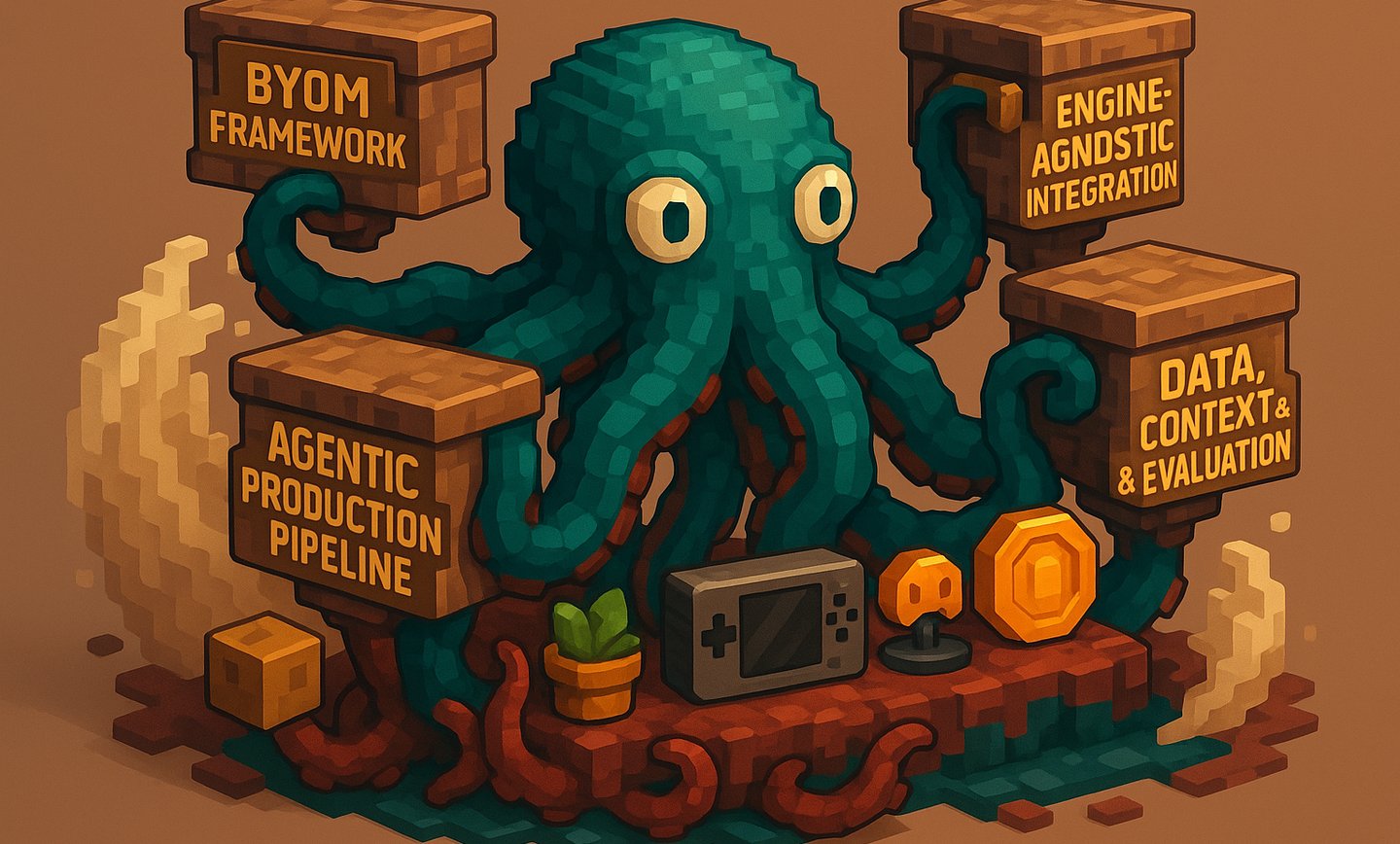Model & Engine agnostic architecture
Fuses multi-model intelligence, agentic pipelines, cross-engine compatibility, and human governance into one adaptive loop — enabling creators to prototype, validate, and optimize faster, while preserving full human control and creative authorship.


Theme: A flexible AI orchestration layer that allows creators and studios to bring, blend, and manage their own models across disciplines.
Model Agnosticism: The architecture supports multiple AI modalities — text-to-image, text-to-3D, animation synthesis, physics tuning, voice, or dialogue — without locking into a specific model family (e.g., Qwen, Gemini, SDXL, Hunyuan3D, or Rodin).
BYOM (Bring-Your-Own-Model): Studios can register proprietary or fine-tuned models into a unified registry with I/O normalization (USD, FBX, GLTF, EXR, JSON).
Dynamic Orchestration: Routing and blending of models based on task context (environment, character, gameplay, etc.).
Human Oversight: Creators review, rank, and curate outputs in-editor — feeding implicit preference data for continuous model alignment.
1. Multi-Model Intelligence & BYOM Framework
2. Agentic Production Pipeline
Theme: Autonomous yet supervised AI agents that coordinate specialized tasks across the entire content pipeline — guided by human checkpoints.
Specialized Agents:
ArtAgent — concept-to-asset generation and variant synthesis.
AnimAgent — rig, retarget, and motion QA.
PlayAgent — gameplay parameter tuning through simulation feedback.
PerfAgent — performance profiling, asset LOD balancing, and render optimization (now integrated here).
Pipeline Memory: Agents persist contextual metadata, asset lineage, and prior human corrections, enabling contextual recall and incremental improvement.
Adaptive Control: Humans can pause, redirect, or refine agent behavior mid-loop — ensuring every automation remains interpretable and correctable.
3. Engine-Agnostic Integration (Unreal + Unity)
Theme: A dual-engine bridge providing identical AI-enhanced authoring and runtime capabilities for Unreal and Unity.
Unified SDK: Shared schema (AssetDescriptor, ValidationManifest, PromptManifest) across both engines.
Unreal Plugin: Python + C++ API bridge for model prompts, feedback panels, and automated imports via DataSmith.
Unity Package: C# SDK for asset validation, procedural tuning, and runtime inference hooks.
In-Editor Human Loop: Creator panels for “Generate → Review → Approve → Publish” cycles directly within the engine workspace.
Theme: A shared intelligence layer that unifies models, agents, and engines through structured data and measurable feedback.
Data Normalization: Integrates model outputs, engine telemetry, and human edits into a single semantic layer for consistent context and traceability.
Evaluation Metrics: Measures visual, gameplay, and performance quality to guide iteration and improvement.
Adaptive Tuning: Refines models and agents using live feedback loops informed by creator intent and runtime data.
Traceability: Records every asset’s lineage and decision path, ensuring transparent and reproducible co-creation.
